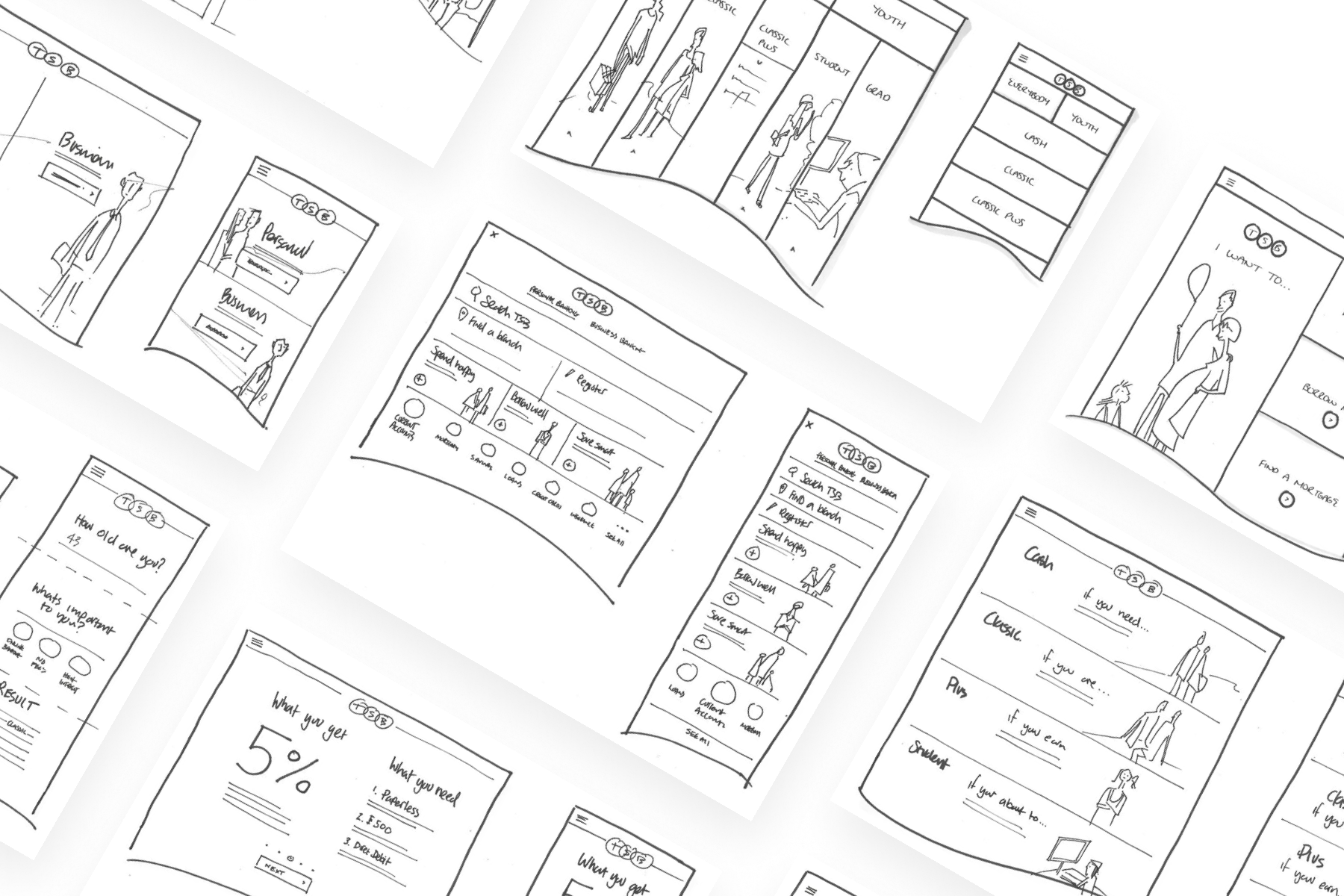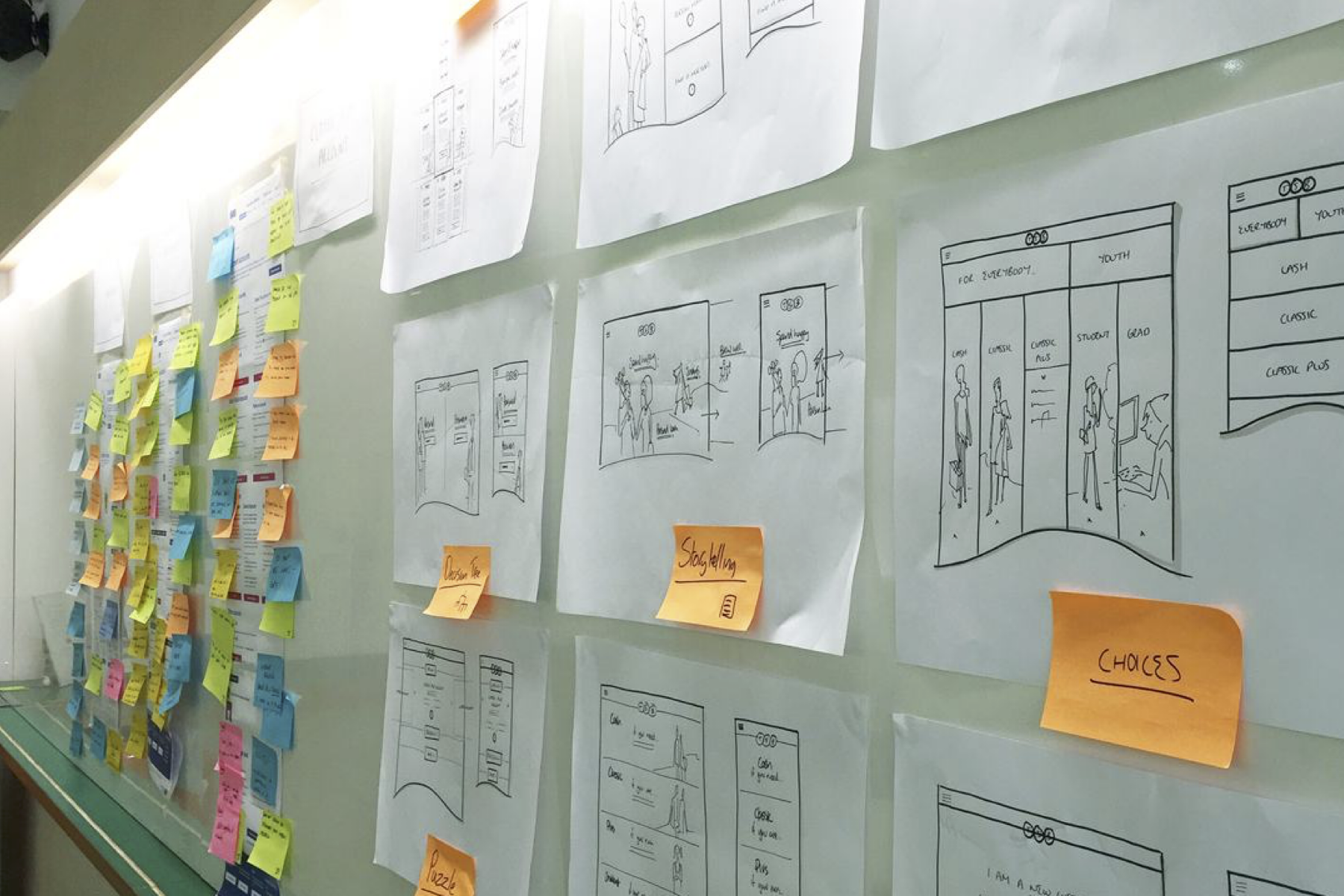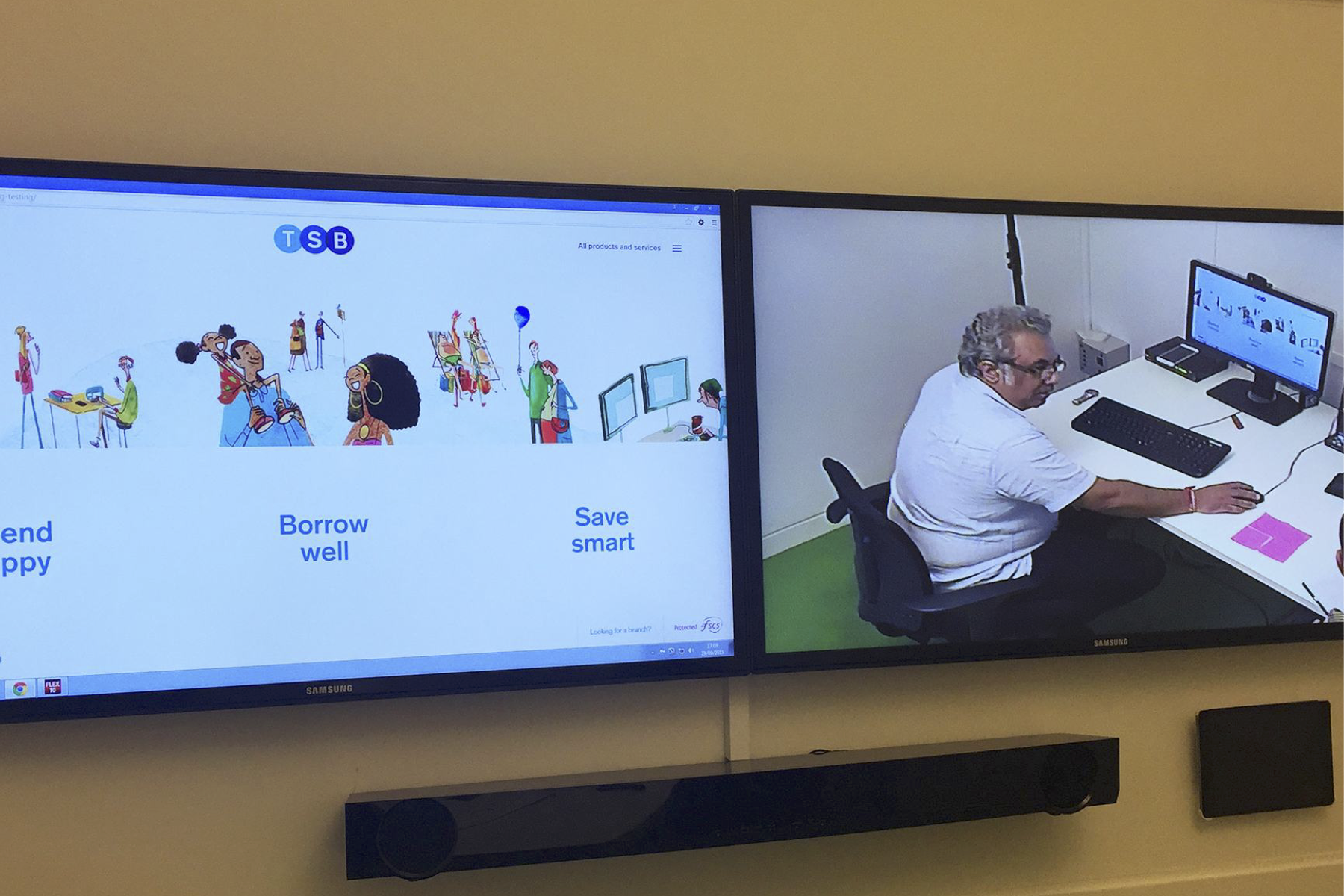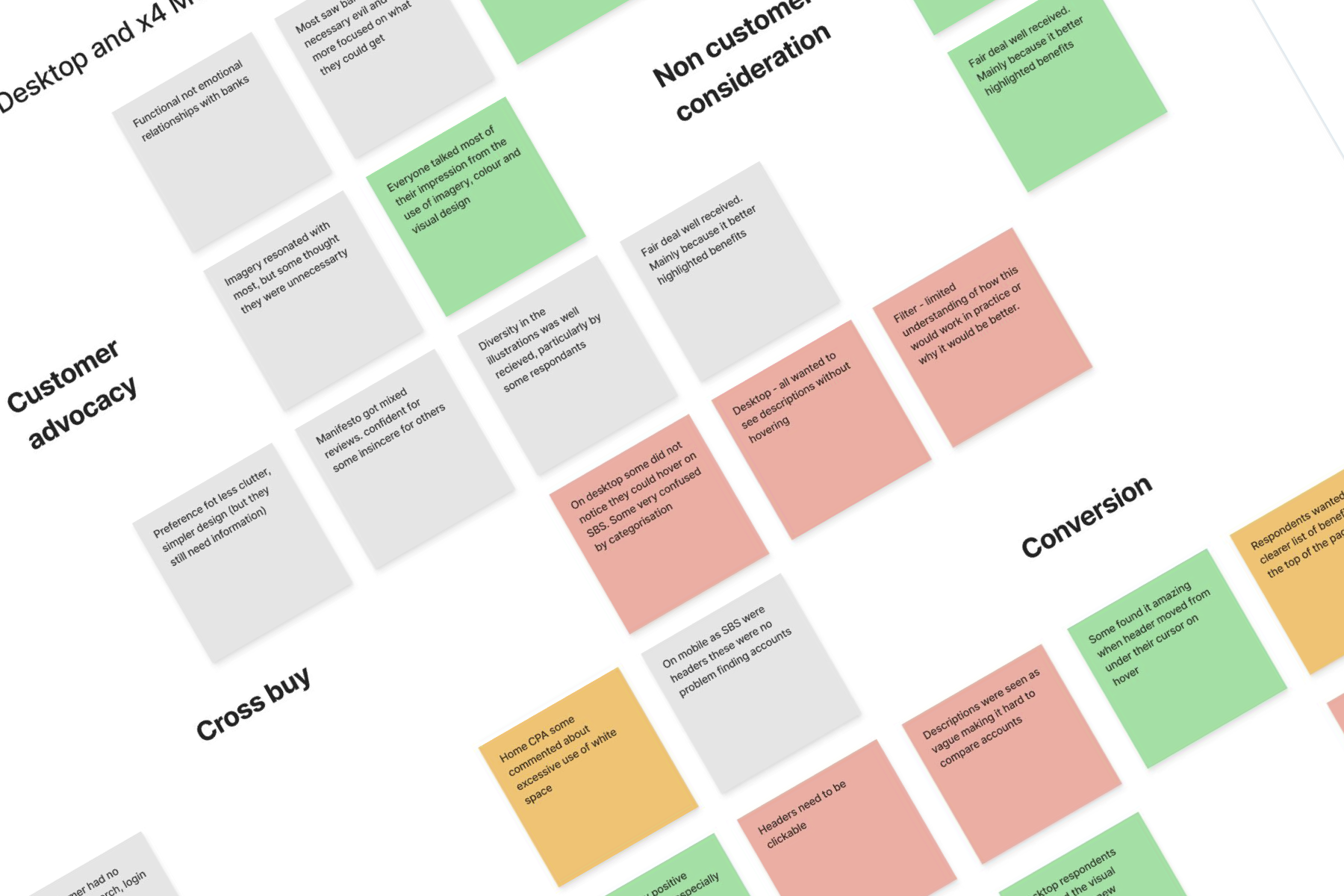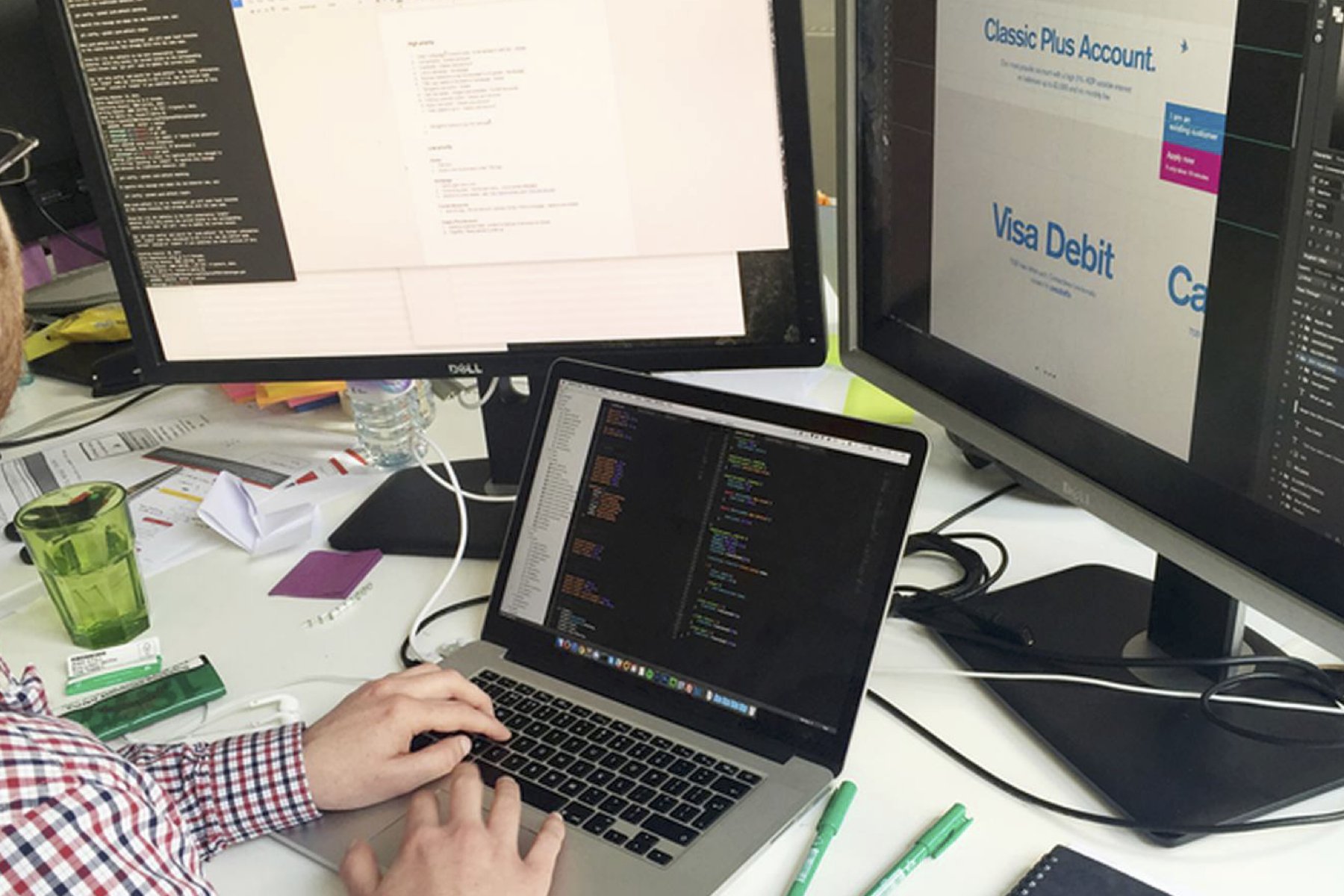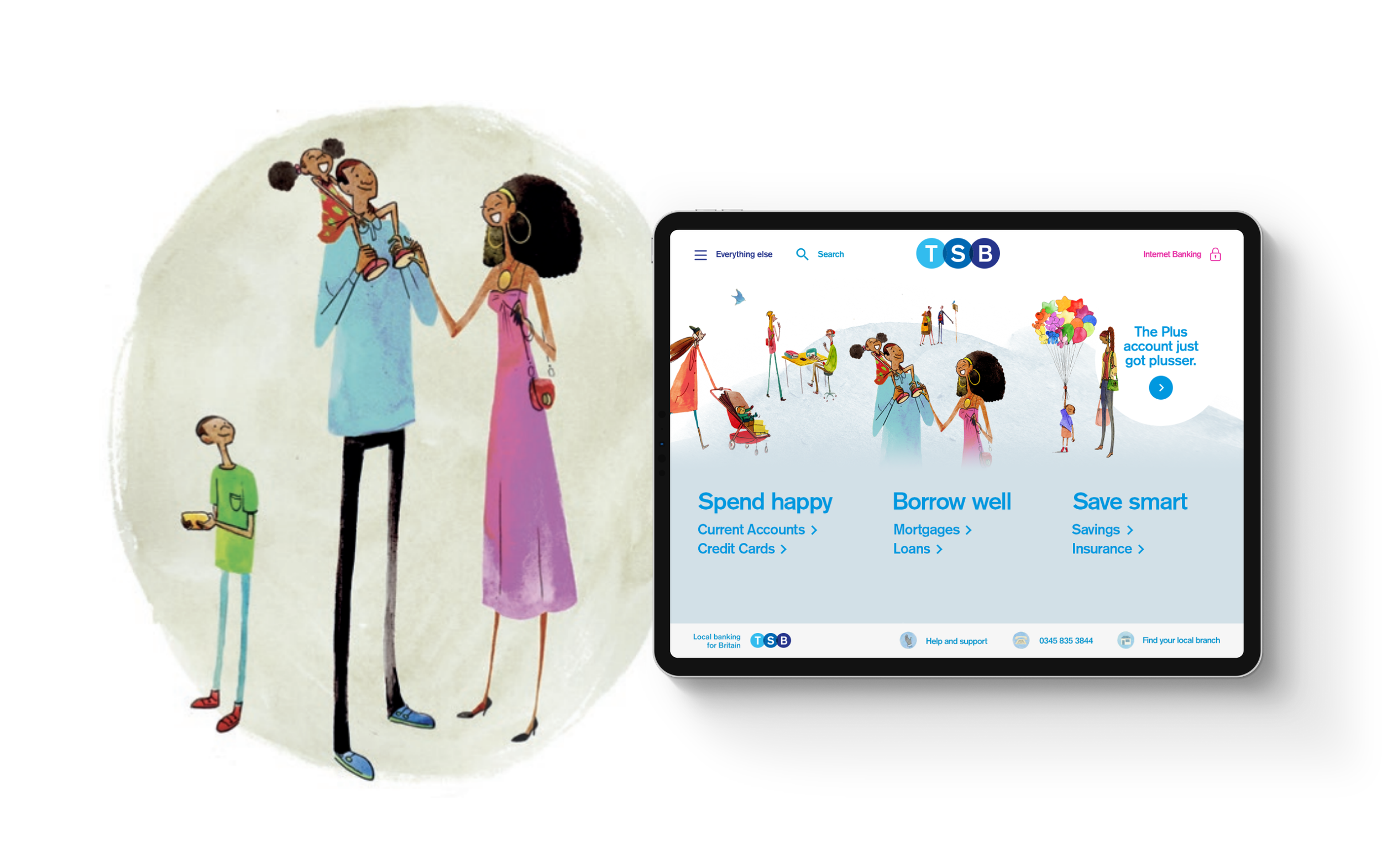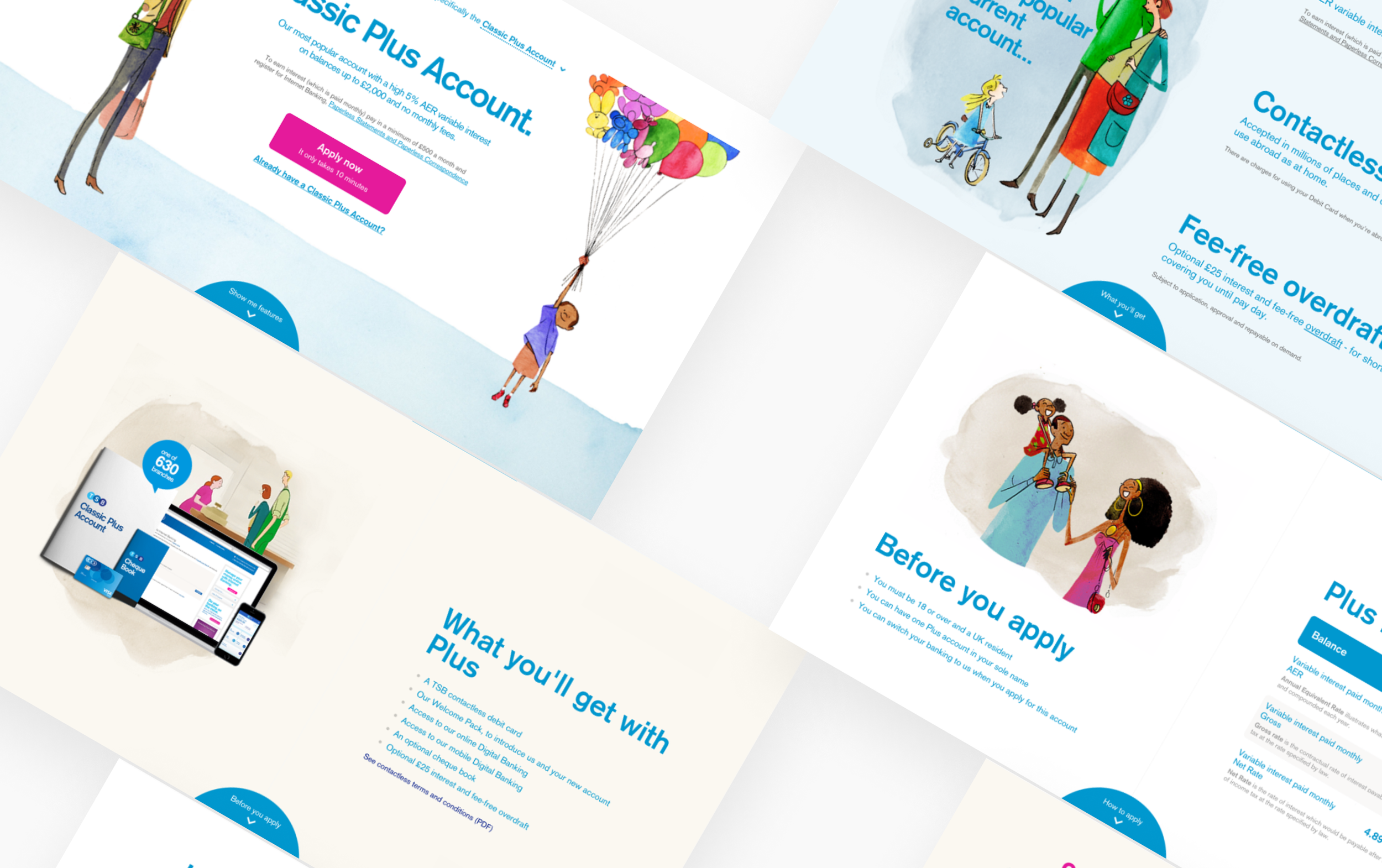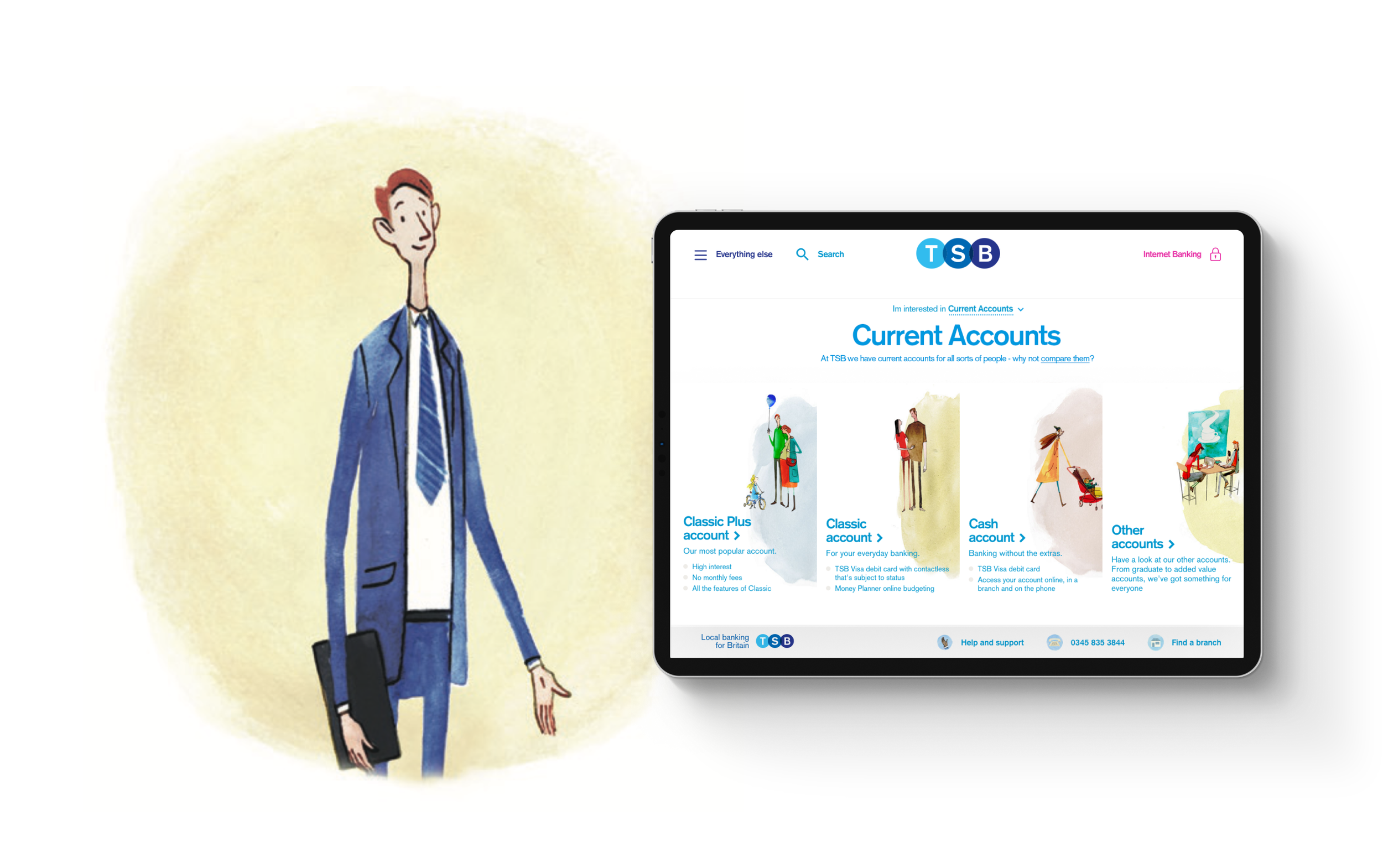
/ Project Story
TSB NextGen.
A Proof of Concept (PoC) to define the next generation of the TSB digital brand experience.
Experience Designer • Foolproof
/ An Overview
Bringing a visual design identity to life for TSB, by helping them realise the potential success of their distinctive brand.
As the Experience Designer, I collaborated closely with a team consisting of a Designer Director, Project Manager, Research Consultant, and x2 Frontend Engineers. My responsibilities included:
Researching emerging trends.
Facilitating requirement gathering and design workshops.
Exploring a range of radically different concepts.
Crafting a visual design direction that is engaging and establishes a strong brand identity.
Facilitating design critique.
Working closely with Research Consultant to validate designs.
Bridging the gap between design and engineering.
Owning the quality and delivery of the PoC.
/ Approach
A structured two-week Design Sprint aims to efficiently explore, validate, and iterate on a new design direction for TSB.
/ Process
01.
Insight Discovery:
Requirements Gathering
We kicked off the project by running a requirements gathering session with team members and project stakeholders to gain aligned and a shared understanding of the projects goals. The documentation from this session served as a reference and guide for the project duration.
02.
Creative Ideation:
Sketching
To stimulate creativity and explore diverse possibilities, we carried out a Crazy Eights sketching exercise. This enabled us to harness everyone's creative input and delve into a wide range of ideas.
03.
Refining exploration:
Design Review
To gather valuable feedback, we presented the sketches to key stakeholders. This review process served as a crucial checkpoint for making informed decisions moving forward. The input received from the stakeholders not only provided clear direction but also offered valuable insights to leverage during ideation.
04.
Visual Design and Prototype Development
We dedicated time to defining a clear visual design direction for the Proof of Concept (PoC) by focusing on refining the identity of the three core pages that the business believed played the most significant role in delivering value to customers. Subsequently, we collaborated closely with engineering to craft a prototype, which we then use for user testing.
05.
User Feedback
We recruited participants who aligned with our product's target audience and conducted comprehensive testing of the PoC, evaluating both its desirability and usability. Throughout the process, I actively engaged in the sessions, all facilitated by our skilled research consultant, and collaborated closely to examine the results.
06.
Review and Reflect
After wrapping up the testing phase, our team convened for a collaborative wash-up session to delve into the results. We examined all notes and engaged in thorough discussions regarding the feedback provided by participants to identify several key areas for improvement.
07.
Ideating in Code
Working in close collaboration with engineering, we applied insights gained from testing to make design amendments directly in the codebase. This approach proved highly effective, saving time by eliminating the need for rapid design iterations on throw away design files.
/ The Outputs
A Proof of Concept (PoC) demonstrating how a leading bank can stand out in a competitive market by showcasing a seamless multi-device experience through responsive design
/ The Results
Following the successful completion of the initial project, we were tasked with applying our evidence-driven design approach to enhance the performance of twelve business-critical areas of the TSB website.
“The result of Foolproof’s work is a digital experience which places our customers’ needs right at the heart of what we do.”
— Lorraine Donnington, Head of UX, TSB


